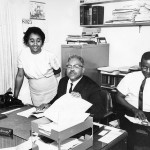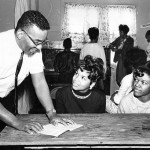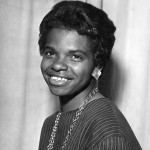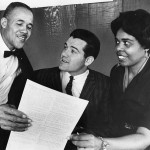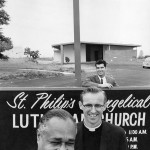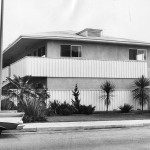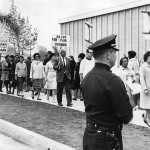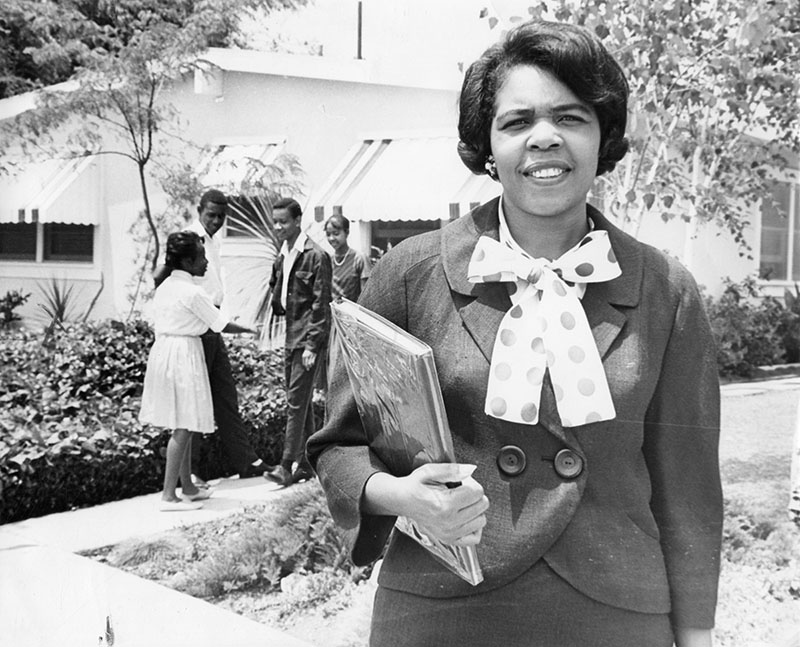
Photograph article dated August 3, 1963 partially reads, “A Valley integration leader says there is much that local chambers of commerce and service clubs could do if they seriously wanted to aid desegregation in the Valley. “But no one has offered any help to us. There is a lot they could do, but they haven’t made the effort,” says Georgia Taylor, president of the Valley chapter of the National Association for the Advancement of Colored People (NAACP). Mrs. Taylor, a 38-year-old Negro who lives with her husband and five children in an almost completely Negro neighborhood in Pacoima, has a project that she says chambers of commerce and service clubs could handle. A major problem in the Valley, she holds, is the fact that many Southern Negros and whites have come to California bringing their segregation practices with them.” Photo by Gordon Dean.
The rise in jobs during the growth of manufacturing and defense industries post World War II brought many African Americans to the Valley, but racial discrimination in the newly built suburban housing developments kept neighborhoods segregated. A large and active African American community formed in Pacoima. In 1960, 90% of the nearly 10,000 African Americans in the Valley lived in there. Community involvement in churches and the local chapter of the NAACP forged opportunities for youth, integration and fair housing practices.
- “Neighborhood Christian Services, a newly established social-religious service in Pacoima has helped Calvary Baptist Church expand, its youth program. Founded to provide social and religious guidance to community groups, the organization will work to combat antisocial elements in economically and educationally deprived groups, say its founders. Mrs. Susie Michaels, a Calvary youth worker, Mr. Broadous and Mr. Baugh hold a planning conference on the church’s program for young people.”
- Neighborhood Christian Services, “Teen-agers attracted by the newly expanded youth program play basketball.” February 15, 1964, Photo by Gordon Dean.
- Rev. Atha Baugh, director of NCS (Neighborhood Christian Services), holds a vocational counseling session with Karen Farris, 17, and Joyce Thomas, 16.” February 15, 1964, Photo by Gordon Dean.
- Photograph caption dated March 27, 1958 reads, “Marie Broadous, 18, daughter of the Rev. and Mrs. H. T. Broadous of 11185 De Garmo Ave., Pacoima, is the teenager of the week for the Pacoima Coordinating Council. Miss Broadous, a journalism major at Valley Junior College, is a Sunday school teacher in her father’s parish, the Calvary Baptist Church, and has assisted with YWCA programs.”
- Photograph caption dated March 4, 1963 reads, “Leaders of the Fair Housing Council – Frank Barnes, left, and the Rev. Paul Sawyer – consult with Mrs. Georgia Taylor of the Valley unit of the National Association for the Advancement of Colored People.” Photo by Jeff Goldwater.
- Photograph caption dated June 1, 1963 reads, “Board members include Hawley Arnold, Mr. Wetzel, and David Nesmith.” Reverend John C. Wetzel, pastor of St. Philip’s Lutheran Church in Pacoima, wants to establish a congregation of people from different races and economic backgrounds at his church.” Photo by George Brich.
- Photograph article dated November 15, 1963 partially reads, “The first formal complaint of racial discrimination under the new Rumford Fair Housing Act has been filed against the owners, agent and manager of a San Fernando apartment. Fair Employment Practice Commissioner Dwight R. Zook accused the operators of an apartment at 302 Harding St. of refusing an application by the Rev. Nathaniel Lacy Jr. because of his race. Mr. Lacy, 28, Negro pastor of the Methodist Church of Pacoima, sought the apartment for his mother and father-in-law, Mr. and Mrs. David E. Willis. Charged in the complaint are property owners John and Antonette Ciufo, Van Nuys; agent Barry Marlin, 14011 Ventura Blvd., Sherman Oaks, and resident manager G. A. Parker.” Photo by Jeff Goldwater.
- Photograph caption dated March 4, 1963 reads, “Pickets protest – More than 100 pickets marched yesterday in front of Valley Board of Realtors Inc. offices, 7232 Balboa Blvd., Van Nuys, to protest realtors’ support of initiative to repeal Rumford Housing Act.” Photo by Jeff Robbins.

